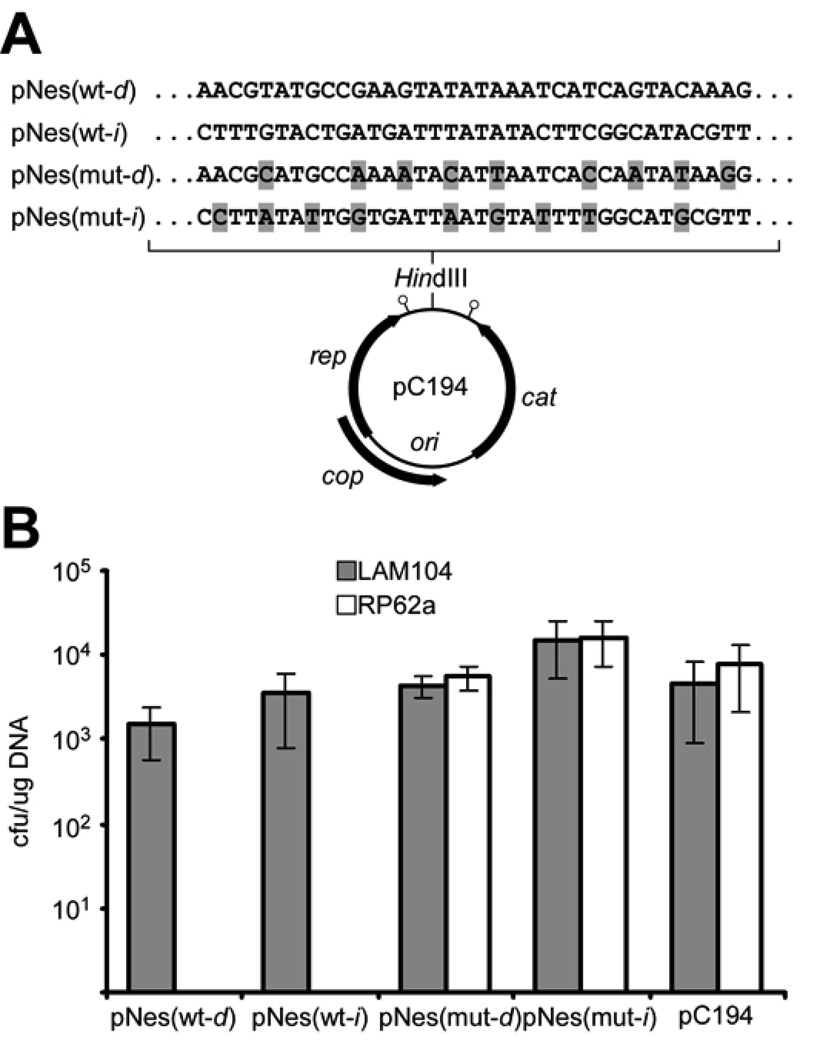Figure 3.
Plasmid transformation is subject to CRISPR interference. (A) Introduction of the wild-type and mutant nes target sequences (mutations highlighted in grey) into the plasmid pC194 (d, direct; i, inverted). The origin of replication (ori) as well as protein-coding genes are indicated. Stem-loops denote the rep and cat transcriptional terminators. (B) RP62a and the Δcrispr mutant LAM104 were transformed in triplicate with the plasmids described in (A). Transformation efficiency was calculated as cfu/µg DNA (mean +/− SD).

